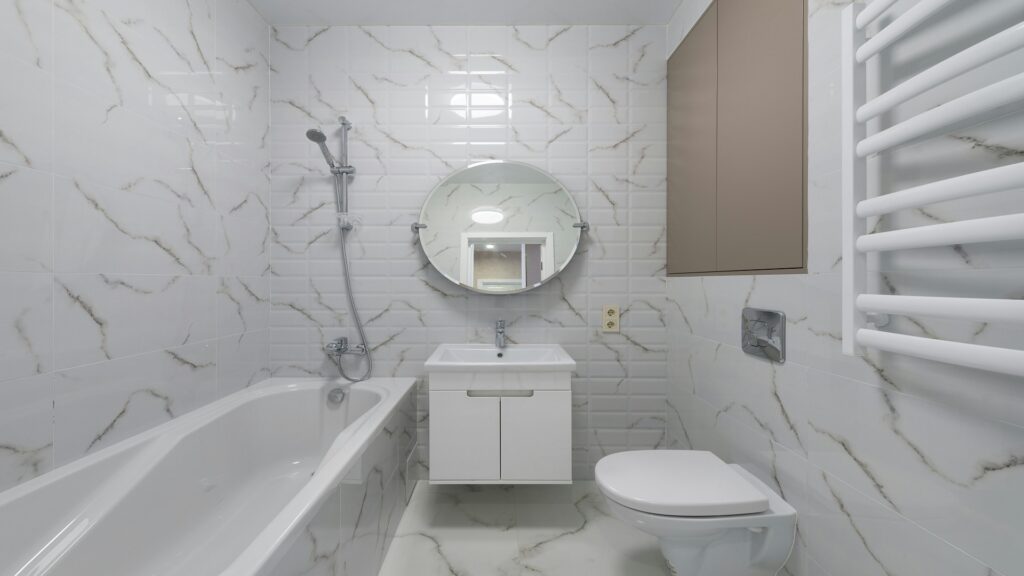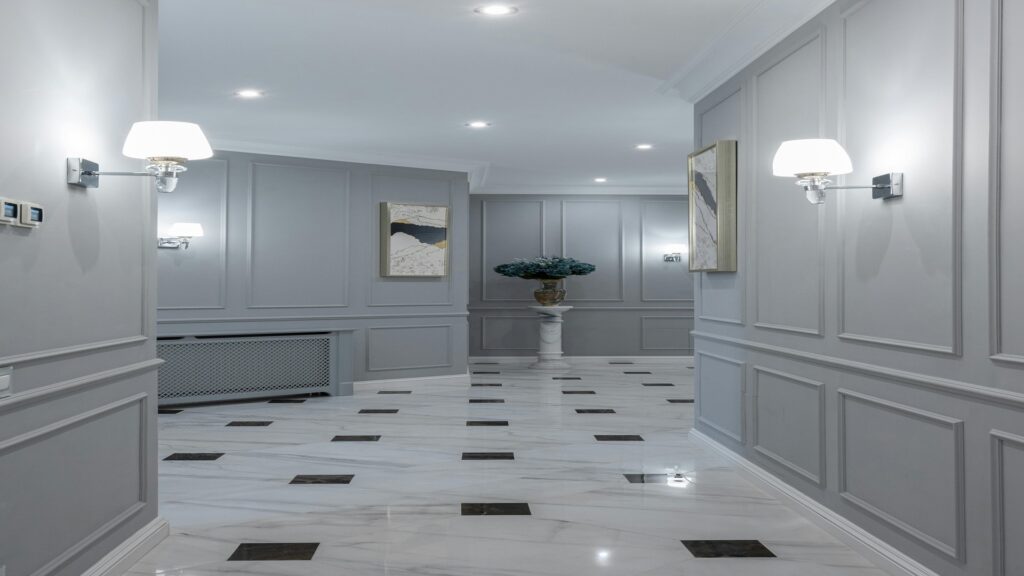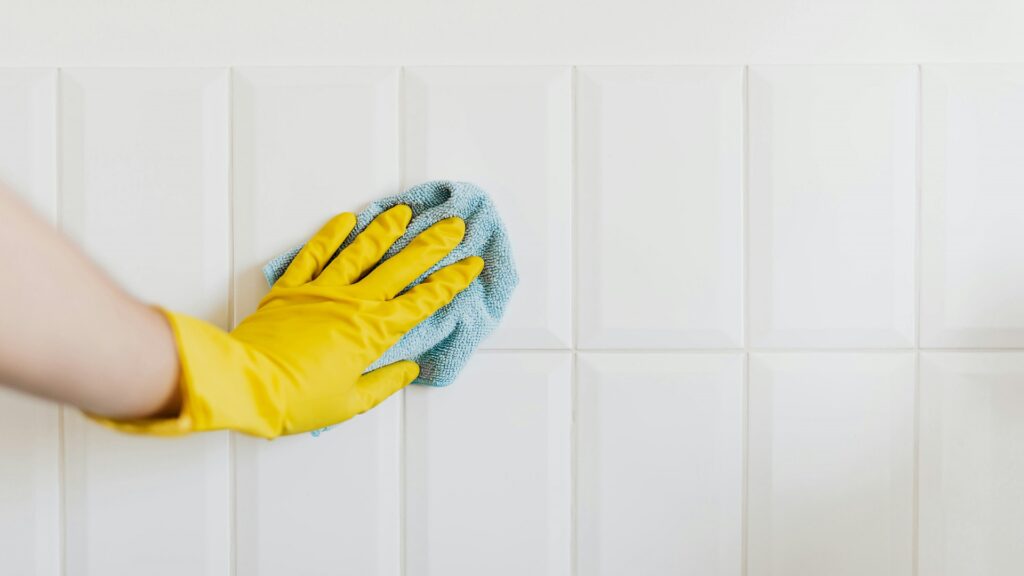Introduction Tile Shop
Tiles are one of the oldest and most reliable materials for covering floors, walls, and ceilings. They can be found in homes, commercial spaces, and outdoor settings, serving both functional and decorative purposes. Tiles are available in a wide range of materials, sizes, colors, and patterns, which makes them a versatile choice for many different areas of a building. Whether you are renovating a bathroom, remodeling a kitchen, or creating a new space altogether, understanding the different types of tiles available and their uses is essential to the Tile Shop.
Understanding Tile Types Tile Shop
Tiles are categorized based on their material, durability, and design. Let’s dive into the most common types of tiles you might encounter in a tile shop.
1. Ceramic Tiles
Ceramic tiles are one of the most popular and widely used types of tiles. Made from clay, these tiles are fired at high temperatures and can be glazed or unglazed. Glazed ceramic tiles have a shiny surface, while unglazed ceramic tiles have a more matte appearance. They are ideal for bathrooms, kitchens, and living rooms due to their easy maintenance and wide range of designs Tile Shop.
2. Porcelain Tiles to Tile Shop
tiles are a type of ceramic tile but are made from a denser and finer clay Porcelain Tiles to Tile Shop. Porcelain tiles are incredibly durable and are highly resistant to moisture, making them perfect for bathrooms and kitchens to Porcelain tiles . These tiles are also known for their ability to mimic natural stone, wood, and even concrete, making them a popular choice for modern and stylish homes.
3. Mosaic Tiles to the Tile Shop
Mosaic tiles are small pieces of tile that are arranged to create a larger design or pattern. They can be made from glass, ceramic, porcelain, or stone. These tiles are perfect for creating intricate, detailed designs on walls, floors, and backsplashes Tile Shop.
4. Decorative Tiles
Decorative tiles are usually made of ceramic or porcelain and are designed to add artistic flair to any space. These tiles can be used to create accent walls, custom murals, or border designs to enhance the overall aesthetic of a room. Whether it’s floral patterns, geometric designs, or vintage-inspired tiles, decorative tiles offer endless possibilities for personalization.

The Flooring Tiles the Tile Shop
When it comes to flooring, tiles offer incredible benefits. Flooring tiles are durable, long-lasting, and easy to maintain, making them an excellent choice for both residential and commercial spaces Tile Shop. Here’s why you should consider flooring tiles for your next project:
- Durability: Tiles are tough and resilient, able to withstand heavy foot traffic and wear over time. They are especially suitable for areas like hallways, kitchens, and living rooms.
- Low Maintenance: Unlike carpets or hardwood, tiles are easy to clean. Regular sweeping and occasional mopping are all that’s needed to keep tiles looking their best.
- Variety of Designs: Tiles come in a wide range of patterns, colors, and finishes, allowing you to create the perfect look for any space.
- Water Resistance: Many types of tiles, such as porcelain and ceramic, are water-resistant, which makes them ideal for wet areas like bathrooms and kitchens Tile Shop.
Choosing Tiles for Your Bathroom
Bathrooms are one of the most common spaces where tiles are used. When selecting bathroom tiles, it’s important to consider both style and functionality. Here are some tips for choosing Tile Shop the best tiles for your bathroom:
- Water Resistance: Bathrooms are exposed to high levels of moisture, so water-resistant tiles like porcelain or ceramic are perfect choices.
- Slip Resistance: To ensure safety in wet areas like the shower or near the bathtub, choose textured or anti-slip tiles that will prevent accidents.
- Aesthetics: Bathroom tiles come in various designs, from classic white subway tiles to bold, colorful patterns. Choose a style that reflects your personal taste and Tile Shop complements the overall theme of your bathroom.
- Size and Layout: Larger tiles can make a small bathroom appear bigger, while smaller tiles are perfect for creating a detailed design on the floor or walls.

Tiles for Your Kitchen: Function and Style
The kitchen is another area where tiles are commonly used, especially for backsplashes and flooring. Kitchen tiles should be easy to clean, durable, and stylish Tile Shop. Here’s what to look for when selecting tiles for your kitchen:
- Easy to Clean: Kitchens are prone to spills, splashes, and stains. Glazed ceramic and porcelain tiles are great for this reason, as they are easy to wipe down and maintain.
- Heat Resistance: The kitchen can get hot, especially around the stove and oven. Porcelain tiles are heat-resistant and will not warp or discolor under high temperatures.
- Style and Design: From classic subway tiles to contemporary geometric patterns, kitchen tiles offer endless design possibilities. Choose tiles that match your bTile Shop kitchen’s style, whether it’s modern, rustic, or traditional.
- Functionality: The floor tiles you choose should be durable enough to withstand heavy traffic, while wall tiles can add a touch of personality to the space Tile Shop.
Tile Suppliers and Showrooms
When shopping for tiles, visiting a tile showroom or supplier is essential to getting the best options. A good tile store will have a wide variety of tile styles, materials, and designs to choose from. They can also offer expert advice on which tiles are best for your specific needs Tile Shop.
- Tile Showrooms: These are physical stores where you can see and feel tiles before making a purchase. You can also view sample boards and mockups to help you envision the final result.
- Online Tile Suppliers: Many tile suppliers offer online shopping, making it easy to browse their collections from the comfort of your home. Online stores often provide detailed product descriptions, installation guides, and customer reviews to help you make informed decisions Tile Shop.

Installing Tiles: What You Need to Know Tile Shop
Tile installation can seem intimidating at first, but with the right tools and preparation, it’s a task that can be done by most DIYers. Here’s a step-by-step guide to installing tiles in your space:
- Prepare the Surface: Clean and smooth the surface where you will be installing the tiles. This is important to ensure proper adhesion Tile Shop.
- Layout Planning: Before you begin laying tiles, plan your layout to ensure that the tiles are evenly spaced and aligned.
- Apply Tile Adhesive: Use a notched trowel to apply tile adhesive to a small section of the surface.
- Place the Tiles: Begin placing the tiles, pressing them firmly into the adhesive. Use spacers to ensure even gaps between tiles.
- Grouting: Once the adhesive has dried, fill the gaps between the tiles with grout. Wipe away any excess grout with a damp sponge to Tile Shop.
Maintaining and Cleaning Your Tiles to Tile Shop
Proper maintenance and cleaning will keep your tiles looking fresh and beautiful for years. Here are some cleaning tips for different types of tiles:
- Ceramic and Porcelain Tiles: Regular sweeping and occasional mopping with warm water and a mild detergent will keep these tiles clean. Avoid using harsh chemicals that can damage the surface.
- Mosaic Tiles: Clean mosaic tiles with a soft cloth and mild cleaning solution. Pay attention to grout lines to avoid buildup.
- Grout Cleaning: Grout can become dirty over time, especially in bathrooms and kitchens. Use a grout cleaner or a homemade paste of baking soda and water to scrub grout lines.

How to Choose the Right Tile Retailer Tile Shop
Finding the right tile retailer is crucial for ensuring you get quality tiles at a fair price. When choosing a tile retailer, consider the following:
- Product Variety: A good tile retailer will have a wide selection of tiles in various styles, sizes, and materials.
- Customer Service: Look for a retailer with knowledgeable staff who can provide advice and help you choose the best tiles for your project.
- Delivery and Installation: Many tile retailers offer delivery and installation services, which can save you time and effort.
The Benefits of Choosing Porcelain Tiles Tile Shop
Porcelain tiles have been a favorite in tile stores for their incredible versatility, durability, and style. But what makes them so special? Let’s explore the benefits of choosing Tile Shop porcelain tiles for your next project.
- Durability: Porcelain is made from a denser, finer clay than regular ceramic tiles, which makes it much stronger and resistant to wear and tear. It’s ideal for high-traffic areas like hallways, living rooms, or commercial spaces.
- Water Resistance: One of the biggest advantages of porcelain tiles is their water resistance. Porcelain is less porous than ceramic tiles, making it perfect for wet areas such as bathrooms, kitchens, and laundry rooms.
- Variety of Styles: Porcelain tiles come in a vast range of styles, including options that resemble natural materials such as wood, stone, or marble. This makes it easy to find porcelain tiles that match your vision for the space.
- Low Maintenance: Porcelain tiles are incredibly easy to clean. Their smooth surface doesn’t trap dirt or grime, which means less time spent on maintenance.

Exploring Mosaic Tiles Tile Shop
Mosaic tiles are like little works of art, made up of smaller pieces that fit together to create intricate designs and patterns. They can add a creative touch to any space, making them perfect for accent walls, backsplashes, and even decorative borders.
- Customization: Since mosaic tiles come in various materials, including glass, stone, ceramic, and even metal, you can mix and match them to create truly unique designs.
- Patterns and Designs: Mosaics are perfect for creating stunning visual effects. Whether you want to create a modern geometric pattern or a beautiful floral design, mosaic tiles give you the freedom to get creative.
- Easy to Install: Although they may look intricate, mosaic tiles are often easier to install than larger tiles, as they come in sheets or mesh backing, which helps with alignment.
Tile Installation: Tips for DIY Enthusiasts
Installing tiles yourself can be a fun and rewarding project, but it does require patience and attention to detail. Here are a few extra tips to ensure that your tile installation goes smoothly:
- Use a Tile Cutter: If you need to cut tiles to fit around corners or edges, a tile cutter will make your job easier. You can find manual or electric tile cutters depending on the size of your project.
- Ensure Leveling: Make sure that each tile is properly aligned and level. Use a spirit level to check your work frequently, as even slight misalignment can throw off the entire look.
- Consider Grout Lines: Use spacers to maintain even grout lines between tiles. This will ensure that your finished floor or wall looks uniform and professional.
- Dry Fit Before Adhesive: Before applying adhesive, lay out the tiles in your desired pattern to make sure everything fits and looks right. This can save you time and effort later on.

How to Choose the Right Grout for Your Tiles
Once the tiles are installed, grout comes into play to fill the gaps and secure everything in place. But how do you choose the right grout for your project? Here are a few things to consider:
- Grout Color: The color of grout can significantly affect the overall look of your tiles. Lighter grout can make a space feel brighter, while darker grout can create a more modern or dramatic effect.
- Type of Grout: There are three main types of grout: cement-based, epoxy, and furan. Cement-based grout is the most common and is best for dry areas. Epoxy grout is ideal for wet areas like bathrooms and kitchens because it’s more water-resistant.
- Consistency and Texture: Some grout types have a smoother texture, while others are more coarse. The texture of the grout can influence the look of your tiles, especially if you’re using smaller tiles with intricate designs.
The Role of Tile Showrooms in Your Tile Selection Process
Tile showrooms play an important role in helping you choose the perfect tiles for your project. Here’s why visiting a tile showroom can make a big difference:
- Visualizing the Space: In a tile showroom, you can see how different tiles will look when they are installed in real-life settings. Showrooms often have sample areas designed to replicate kitchens, bathrooms, and living rooms, giving you a better idea of how the tiles will look in your own space.
- Expert Advice: The staff at a tile showroom are usually knowledgeable and can offer helpful suggestions based on your needs. Whether you’re looking for tiles that match your existing decor or need help deciding on the best materials for high-moisture areas, they can guide you in the right direction.
- Touch and Feel: One of the biggest advantages of shopping at a showroom is the ability to physically touch and feel the tiles. This gives you a sense of their texture, weight, and quality that’s difficult to gauge online.

The Future of Tiles: Trends to Watch
As with any design element, tile trends evolve over time. The world of tile design is constantly changing, with new patterns, materials, and techniques emerging. Here are a few tile trends to keep an eye on:
- Large-Format Tiles: Big tiles are becoming more popular, especially for floors. Large-format porcelain tiles can create a seamless look with fewer grout lines, giving your space a modern, minimalistic vibe.
- Sustainability: Eco-friendly tiles made from recycled materials or sustainably sourced options are becoming increasingly popular. These tiles provide an environmentally-conscious choice for those looking to reduce their carbon footprint.
- Bold Patterns and Colors: While neutral tones have always been a classic choice for tiles, more people are embracing bold, statement-making patterns and colors in their homes. Geometric patterns, vibrant hues, and artistic designs are becoming trendy choices for kitchens and bathrooms.
- Textured Tiles: Tiles with raised patterns or textures are gaining popularity for creating depth and visual interest in spaces. Textured tiles can add a unique touch to any room, whether it’s on the walls or floors.
Conclusion: Choosing the Right Tiles for Your Project
Choosing the right tiles for your home or business is an important decision that can impact the overall look, feel, and functionality of your space. Whether you’re planning a bathroom renovation, installing a new kitchen backsplash, or updating your floors, understanding the types of tiles available and how to properly install and maintain them will help ensure a successful project.
Remember to take your time when selecting tiles, and don’t hesitate to visit a showroom or consult with experts to get the best advice. Tiles are more than just a building material—they are a design statement that can transform any room.

Understanding Tile Retailer Discounts and Offers
When shopping for tiles, cost is often an important consideration. Tile stores offer various discounts and special offers, making it easier to find quality tiles within your budget. Here are some strategies to help you take advantage of discounts and offers at tile retailers:
- Sales Events: Many tile retailers have seasonal sales or clearance events where they offer significant discounts on tiles. Keep an eye on these events, especially during off-peak seasons, to save money on your tile purchase.
- Bulk Discounts: If you’re working on a large project, like remodeling your entire kitchen or bathroom, ask the retailer if they offer bulk discounts. Buying in larger quantities can often get you a better deal per tile.
- Loyalty Programs: Some tile retailers offer loyalty programs or membership discounts for frequent shoppers. If you plan to buy tiles regularly, signing up for these programs can be a great way to save money in the long run.
- Price Matching: Certain retailers offer price-matching guarantees, meaning they’ll match the price of a competitor if you find the same tile elsewhere for less. This can be an easy way to ensure you get the best deal.
The Environmental Impact of Tiles
Tiles are a sustainable option for flooring and wall coverings, but their environmental impact can vary depending on the materials used and the production methods. Here’s how to make environmentally conscious decisions when selecting tiles:
- Recycled Materials: Some tiles are made from recycled materials, such as glass or old ceramic tiles. Opting for these types of tiles helps reduce waste and lower the demand for raw materials.
- Eco-Friendly Manufacturing: Tile manufacturers are increasingly adopting eco-friendly production practices. Look for certifications like the GreenGuard or LEED (Leadership in Energy and Environmental Design) to find tiles made with environmentally responsible methods.
- Energy Efficiency: Tiles like ceramic and porcelain are excellent at retaining heat, which can help reduce the need for additional heating in colder months. This energy efficiency can lead to lower energy consumption in your home over time.
- Longevity: Tiles are durable and long-lasting, meaning they don’t need to be replaced as frequently as other flooring materials. This longevity contributes to a lower overall environmental impact.

Tile Trends for 2025: What’s New and Exciting?
As we move into 2025, tile designs continue to evolve. New technologies, materials, and styles are changing the way we think about tiles. Let’s look at the most exciting tile trends for the upcoming year:
- Nature-Inspired Tiles: Tiles that mimic natural materials like wood, stone, and marble continue to grow in popularity. Designers are exploring innovative ways to replicate the beauty of nature while offering the benefits of tile, such as easy maintenance and durability.
- Smart Tiles: Technology is increasingly making its way into the tile industry. Smart tiles that can monitor temperature, humidity, and even lighting are beginning to make their mark in high-tech homes. These tiles help create more efficient, comfortable, and interactive spaces.
- Textured and 3D Tiles: 3D tiles with raised patterns or textured surfaces are taking over the design scene. These tiles add depth and visual interest to walls, making them the focal point of a room. Whether it’s a sleek, modern texture or a rustic stone finish, 3D tiles are a trend to watch.
- Earthy Tones and Bold Colors: While neutrals remain popular, bold colors are making a comeback. From vibrant blues to rich oranges, expect to see more kitchens and bathrooms featuring tiles in rich, earthy tones or striking hues.
The Cost of Tile Installation
When budgeting for a tile project, it’s important to consider both the cost of the tiles themselves and the installation costs. Here’s a breakdown of the factors that influence the overall cost of tile installation:
- Tile Material: The cost of tiles can vary greatly depending on the material. Basic ceramic tiles are typically more affordable, while high-end porcelain, marble, or designer tiles can cost significantly more.
- Installation Complexity: The complexity of the installation will also affect the price. If you’re installing tiles in an area with intricate patterns or in a space with many corners, cuts, and angles (like a bathroom or kitchen), the labor cost may be higher.
- Tile Size and Shape: Larger tiles or custom-shaped tiles can require more time and effort to install, which may increase the installation cost. On the other hand, standard-sized tiles tend to be quicker and cheaper to install.
- Preparation and Materials: The cost of adhesive, grout, spacers, and other installation materials should also be factored into your budget. If the surface you’re installing tiles on needs preparation (like leveling or repairing), this could add additional costs.

Common Tile Installation Mistakes and How to Avoid Them
Tile installation requires precision and patience. Here are some common mistakes people make when installing tiles—and how to avoid them:
- Incorrect Adhesive Application: Applying too much or too little adhesive can result in uneven tiling and poor adhesion. Always follow the manufacturer’s instructions for the best results.
- Not Using Tile Spacers: Tile spacers ensure that your grout lines are even. Skipping this step can lead to uneven gaps, which will make the finished project look unprofessional.
- Forgetting to Seal Grout: Grout can become stained and discolored over time, especially in areas exposed to moisture. Make sure to seal grout lines after installation to protect them and maintain their appearance.
- Not Letting Tiles Set Properly: It’s tempting to walk on newly installed tiles right away, but it’s important to give the adhesive time to set. Walking on the tiles too soon can cause them to shift or crack.
Choosing Tiles for Outdoor Spaces
Tiles are not just for indoor spaces! Outdoor tiles are a great choice for patios, walkways, and even outdoor kitchens. Here’s what you need to know when selecting tiles for outdoor areas:
- Weather Resistance: Outdoor tiles need to be able to withstand changing weather conditions. Porcelain and natural stone tiles are excellent choices for outdoor spaces because they can handle the elements.
- Slip Resistance: Since outdoor tiles are exposed to rain, moisture, and other weather elements, slip-resistant tiles are crucial for safety. Look for textured tiles or those with a higher slip resistance rating.
- UV Resistance: Outdoor tiles should be UV-resistant to prevent fading and discoloration over time. Look for tiles with a durable glaze or natural stone that won’t deteriorate in the sun.

Aurthor remarks
Whether you’re remodeling your home, updating a bathroom, or creating a new outdoor space, choosing the right tiles is an important part of the process. The perfect tiles can elevate your space, making it more beautiful, functional, and long-lasting.
Remember to carefully consider the type of tile, its installation, and maintenance needs to make the best decision for your project. And, of course, don’t forget to have a little fun along the way—choosing tiles is an opportunity to showcase your style and creativity!

